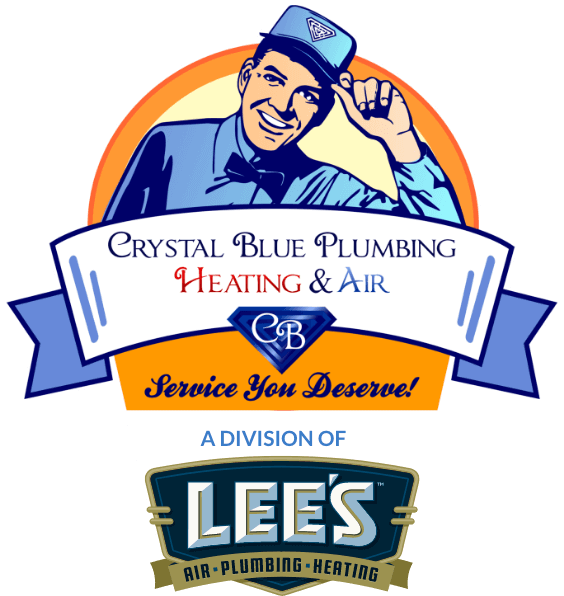The Role of Backflow Prevention in Protecting Your Home
You use your Sacramento plumbing system to access clean and safe water for things like cooking, bathing, cleaning, and drinking. Unfortunately, many homeowners ignore their plumbing system until something goes wrong. In the case of backflow, this is a serious situation that can result in unsafe conditions that contaminate your water supply. As such, there are some important benefits associated with backflow prevention.
What Is Backflow?
The water within a plumbing system should always flow in one direction. If the water direction reverses, this can lead to a variety of contaminants entering your water supply when they should have been flushed out. This backflow can also damage your plumbing system and pipes. You may notice some common signs of backflow occurring in your home, such as a change in water pressure, discolored water, or odd smells coming from your faucets and fixtures. In severe cases, backflow can make you and your family sick, it can lead to pipes bursting, and it can damage pipe connections.
Backflow typically occurs when there is water pressure in the lines of your plumbing system that exceeds water pressure coming from your main water supply. That is, negative water pressure draws contaminants in.
The Dangers of Backflow
As we briefly mentioned, consuming water that has been contaminated by backflow can be dangerous to your health. This is due to the presence of bacteria and other pathogens in the water. You may notice subtle signs of backflow like gastrointestinal issues. There are more serious problems you can experience, such as hepatitis.
Protecting Your Home From Plumbing Damage
It’s common for backflow to lead to structural issues within your plumbing system. This is due to the corrosion that can occur. If your pipes burst or leak because of backflow problems, this can lead to structural and water damage. Mold can grow and spread quickly. You may have an area of your home that becomes contaminated with unsafe materials. This is an issue for consumption, running certain appliances, bathing, and more.
The Use of Backflow Prevention
Luckily, there are several backflow prevention devices that can be used to prevent water flow from reversing within your plumbing system. It’s essential to start with an inspection of your plumbing system to see if there are certain areas that pose a risk. We can also determine if backflow is already occurring. Most commonly, we see backflow occur at a point of cross-connection where water pressure is at risk of shifting easily.
We install devices like barrier valves and vacuums that ensure water only flows in one direction. Specific parts include atmospheric vacuum breakers, pressure vacuum breakers, and double-check valves. These devices typically only activate when they sense backflow is occurring. They are usually located at the end of your water main line before water passes through to the various pipes in your home.
Maintenance and Inspection Needs
If you live in a residence that is prone to backflow, it’s imperative that you keep up with routine inspections and maintenance of your plumbing system and backflow prevention devices. This will allow us to spot issues before they cause a catastrophic situation. We complete all our work according to local code and ensure we protect the community around your residence. We recommend that you schedule this routine service once per year.
Common Signs of Backflow Problems
While our team can use more invasive diagnostics to determine if backflow is an issue in your residence, there are some signs you can watch out for. Most homeowners don’t think about the potential for backflow, but it may be to blame for the following problems.
Frequent Plumbing Problems
If you find yourself calling a professional frequently to fix things like loose pipe connections, leaky pipes, burst pipes, and other plumbing damage, backflow may be to blame. This is especially true if you find that certain sections of your plumbing system are experiencing ongoing corrosion problems. Corrosion of your pipes is normal, but it usually occurs over the course of many years. Backflow can speed up this process.
Abnormal Smells and Tastes
The water coming from your faucets and fixtures shouldn’t have any odor to it. If you notice that there is a strong scent to your water, it may be contaminated. It’s best that you don’t consume the water until you have our team confirm that it’s safe to do so. Also, your water shouldn’t have any kind of bad taste to it.
Cloudy or Discolored Water
Look at the water that’s coming from your plumbing system. It should be completely clear and free of any debris. You should never have cloudy or dirty water coming from your faucets.
Physical Signs and Symptoms
There is a chance that your water looks, smells, and tastes completely fine. However, physical symptoms like gastrointestinal upset, diarrhea, stomach cramping, nausea, headaches, and fatigue may be caused by backflow.
Is Backflow a Common Problem in Homes?
In most residential homes, backflow prevention isn’t something that’s standard on an ongoing basis. However, there are changes in water pressure, a water main break in your area, a local hydrant being used, and other scenarios that can temporarily create a dangerous situation in your residence. It can be beneficial to have backflow prevention in place for these times. It’s also important that you understand the risks of backflow and what to look out for if it’s present. This allows you to act and call in a professional as needed.
It may be necessary for you to boil your water or run the water for a specific amount of time to get rid of contaminants.
Is Backflow Prevention Expensive?
The cost of backflow prevention can vary. Some devices are relatively affordable and simple to install. A more severe risk of backflow will warrant more elaborate equipment, which can raise the overall cost. There are also fees associated with the routine and inspection of your backflow prevention devices and the cost of labor. Obviously, larger, more elaborate plumbing systems will cost more. The price may increase with the presence of any excessive local plumbing regulations that are in place.
Working With a Professional
It’s important that you work with an experienced professional to have backflow prevention devices installed. If you work on your plumbing system yourself, you run the risk of causing problems or increasing your risk of backflow if the device is incorrectly installed. All of the work should be done according to local code as well.
Crystal Blue Plumbing, Heating, and Air can provide you with backflow prevention assistance if you’re located in the Sacramento, CA, area. We also offer other services such as the installation of heating and cooling equipment, routine maintenance, and emergency repairs. We offer a large variety of plumbing services, including sewer repair, pipe replacement, video inspections, gas line work, water testing, drain cleaning, and much more.
Contact Crystal Blue Plumbing, Heating, and Air in Sacramento today.








